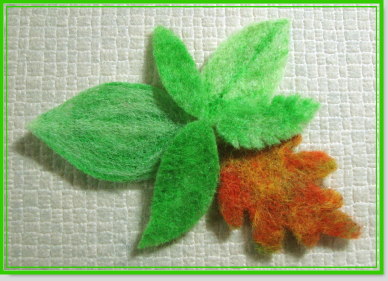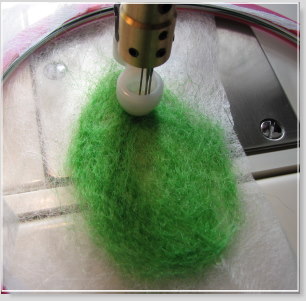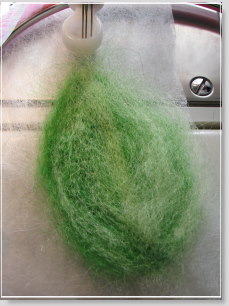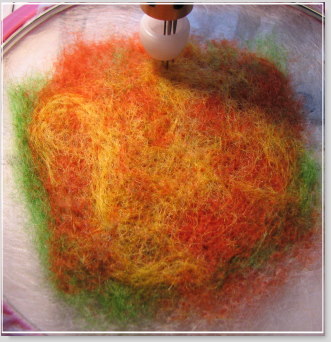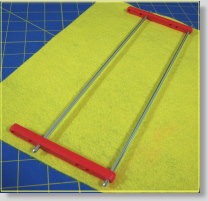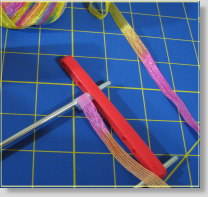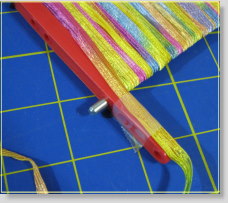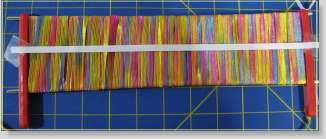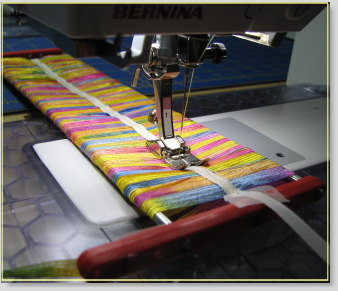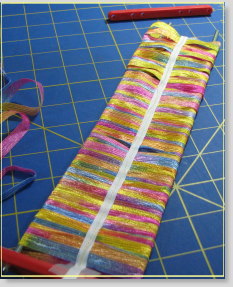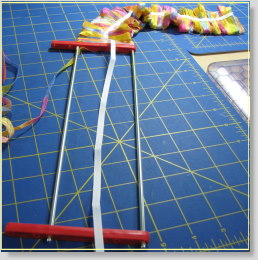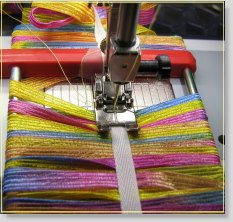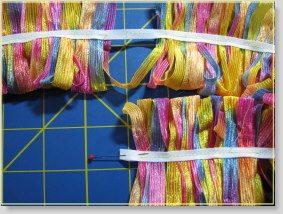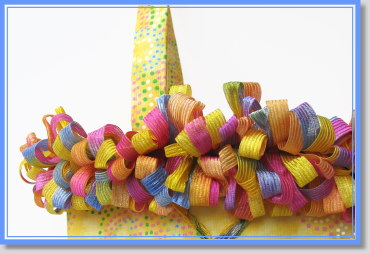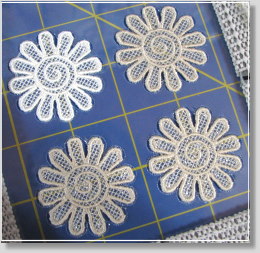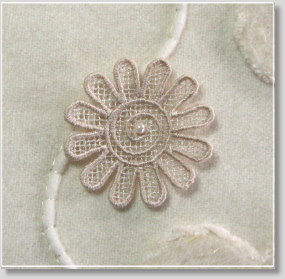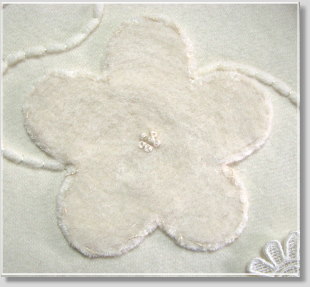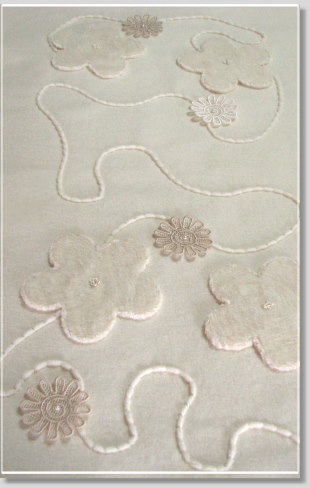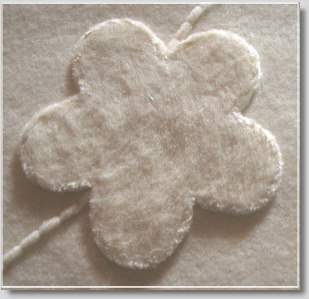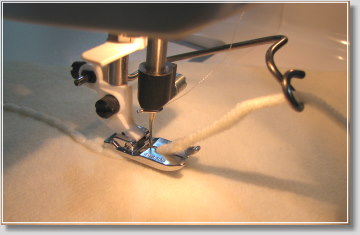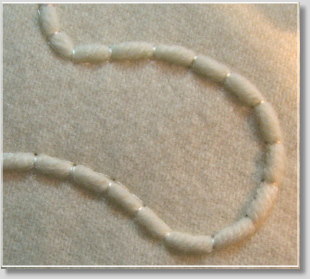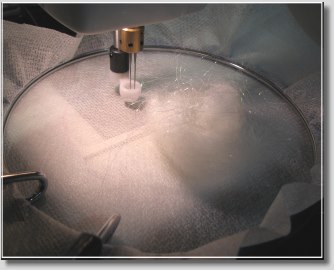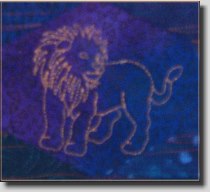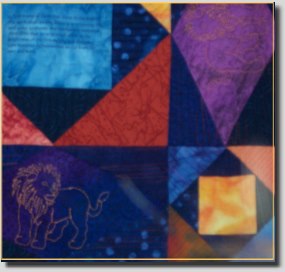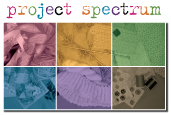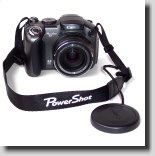This piece of needle play is difficult to categorize. True, it does involve needle felting silk to silk. However, it also involves free motion embroidery and a little trapunto. So, it really belongs in Fabrications as well. That said, here is a helpful lesson on all of the above.
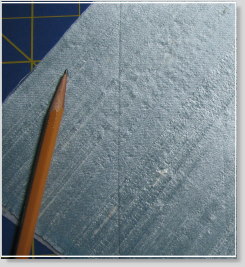
Starting with a piece of silk dupioni (any size you want), stabilize it with a heavy fusible stabilizer. I used Decor Bond. Draw some diagonal lines with the light stroke of a pencil or any marker of your choice. Next, cut some freehand circles out of a contrasting color of silkdupioni, varying the sizes for more visual interest.
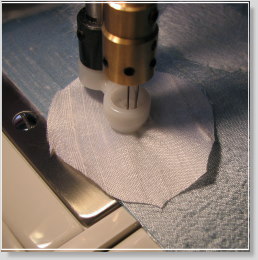
Place one of your circles of silk at the beginning of a pencil line. Using about three needles in your Babylock Embellisher (or other needlepunch machine), tack down the first circle in the center.
Slowly begin working your way around the silk, lightly securing it with your fingers so that it doesn’t form folds. It helps to felt a cross pattern after the tack down and then continue felting the circle until complete. Your goal here is texture; a light felting is all that is needed.

Continue felting circles, alternating their sizes. Don’t worry about the distortion in the base fabric. The next step will take care of it.

When your circles are complete, thread your sewing machine with some variegated rayon thread and attach a free motion foot. Drop the feed dogs. To form the appearance of water, you are going to embroider the surface around the silk circles with a garnet stitch. This versatile stitch is fun to create and easy to do.
Using a straight stitch setting, begin making circle shapes with the needle. Go around and around, stitching over the previous round of stitches. When you are satisfied with the circle’s appearance, move on to the next circle. Vary the sizes, making some small, some large, and some in between. Within a few minutes you will feel like an expert at the garnet stitch. This wonderful stitch can be used for adding detail to animals, birds, reptiles, insects, flowers, leaves, water, rocks, and a myriad of other things.
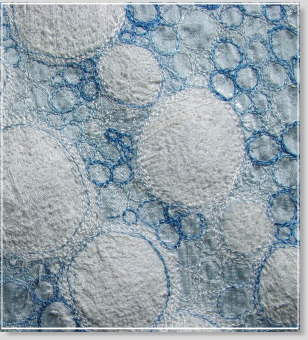
When you have completely filled the background fabric with garnet stitches, thread your machine with a rayon thread the color of your silk circles. Using the same method, stitch around the circumference of each circle until all frayed edges are covered with stitches.

You now have a relatively flat background with rows of circular “puffs.” Turn your piece over to the wrong side. With scraps of cotton batting, cut freehand circles a little smaller than each of your silk circles. Use a very light dab of Glue Pins or a similar water soluble product to attach them to the underside of each circle.
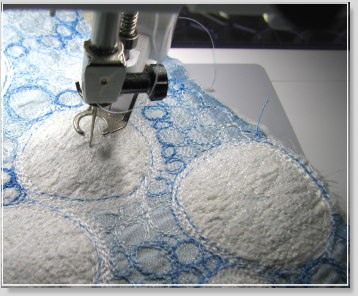
Turn your fabric to the right side and return it to the sewing machine. With the same thread and settings, lower the needle into the middle of a silk circle. Sew a few securing stitches and cut your tread tail. Now free motion stitch a sand dollar design (or any design of your liking) over the surface of the silk circle. Repeat with each circle until finished.
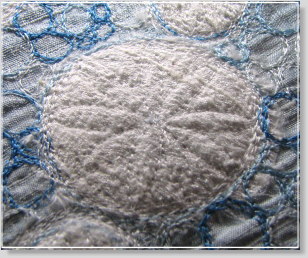
When I completed my piece, I auditioned several different beads that I thought would look nice in the center of the sand dollars. However, I found that the wonderful surface texture created by these methods needed no further embellishment.
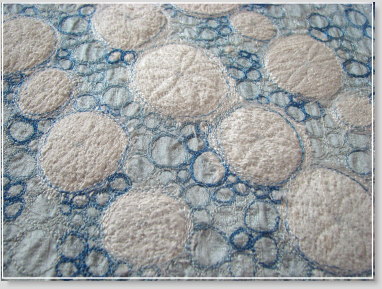
I hope you will experiment with this exercise and use the methods in larger works. Silk is an excellent choice when texture and sheen are required. Needle felted silk increases the textural quality of your work and can add realism to individual elements.
Note: I chose blue and white for this project because blue, white, and grey are Project Spectrum’s color choices for February and March. If you’re not familiar with Project Spectrum, click on the banner in the side bar and visit their website.
~~~~~~~~~~~~~~~~~~~~~~~~~~~~~~
N. Rene West
Time Treasured

























